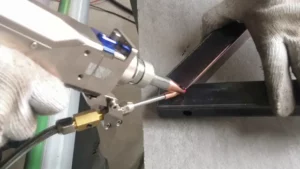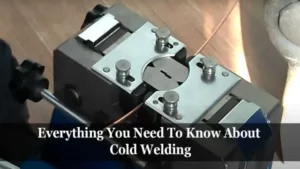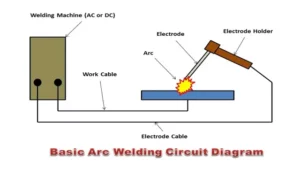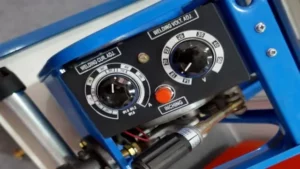Have you ever wondered how plastic products such as toys, electronics, and medical devices are assembled so flawlessly? The answer to this puzzle lies in a technology called ultrasonic welding. Ultrasonic welding machines are highly efficient and robust systems that can join plastic parts together, creating strong and seamless connections. In this blog post, we’ll dive into how ultrasonic welding machines work and explore the science behind this fascinating process.
Discover more about this exciting technology and explore how it revolutionizes manufacturing operations worldwide.
Introduction
Ultrasonic welding is a process that joins two pieces of materials together by heating and melting them using high-frequency ultrasonic vibrations. Ultrasonic welding machines are designed to produce these ultrasonic vibrations using electrical energy. This electrical energy is converted into mechanical energy by a transducer, which then generates high-frequency vibrations.
The vibrations are then transmitted to the welding head, which applies pressure onto the materials to be welded. The pressure combined with the high-frequency vibrations causes the materials to heat up and melt at their contact points, welding them together. The welding head moves back and forth over the material to make a continuous weld.
Ultrasonic welding is commonly used in the automotive, aerospace, medical, and textile industries, as well as for packaging, electronics, and other applications. The technology is highly efficient and can produce strong, reliable and consistent welds, making it a popular choice for many manufacturers.
Explanation of Ultrasonic Welding
Ultrasonic welding is a technique used to join plastic parts through the application of high-frequency ultrasonic vibrations. This technology has gained significant traction over the years due to its numerous advantages over traditional welding methods, such as improved weld quality, reduced energy consumption, and increased speed. With ultrasonic welding, parts are held together under pressure, and an ultrasonic tool vibrates at high frequency, generating heat through friction that melts the material, causing it to bond permanently when it cools.
The process is fast, reliable, and efficient, with little to no damage to the plastic parts. It has found many applications, including automotive, medical, and consumer goods manufacturing, among others, where consistency, accuracy, and speed are crucial.

Components of an Ultrasonic Welding Machine
Ultrasonic welding machines are sophisticated pieces of equipment used in various industries to bond different materials. These machines employ high-frequency ultrasonic vibrations to melt and fuse materials together to create a permanent bond. There are three primary components of an ultrasonic welding machine: a power supply, a transducer, and a sonotrode.
The power supply sends an electric current to the transducer, which converts it into high-frequency mechanical vibrations. The sonotrode then delivers these vibrations to the materials being welded to create a strong, seamless bond. The ultrasonic welding process is fast, efficient, and precise, making it an excellent choice for manufacturing applications.
The Process
Ultrasonic welding is a process used to join two materials together using high-frequency mechanical vibrations. It works by converting electrical energy into mechanical vibrations that are transmitted through a welding horn to the materials being joined. The materials are pressed together, and the vibrations cause the molecules at the joint to move back and forth rapidly.
This motion creates friction, which generates heat that melts and fuses the materials, resulting in a strong, permanent bond. The process is capable of joining a wide range of materials, including metals, plastics, and ceramics, which makes it ideal for use in various industries such as automotive, medical, and electronics. It is also a fast and efficient method of joining materials, which makes it a cost-effective solution.
So, whether you need to join two pieces of plastic or metal, an ultrasonic welding machine can get the job done quickly and effectively.
Step-by-Step Process of Ultrasonic Welding
Ultrasonic welding is a widely-used manufacturing process that involves using high-frequency, low-amplitude vibrations to join two pieces of material together. The process involves placing the two materials to be welded together and then applying pressure to them while ultrasonic vibrations are employed. These vibrations facilitate the creation of heat through friction between the materials, essentially melting the plastic and fusing the two parts together.
One significant advantage of ultrasonic welding is that it is a fast and cost-effective process that does not require any additional materials such as glue or adhesives. Moreover, it is a particularly useful process for joining dissimilar materials, like metals and plastics. Overall, ultrasonic welding is an essential technique that offers several benefits in various industries like automotive, medical, and electronics.
Advantages of Ultrasonic Welding
Ultrasonic welding is a popular process used in manufacturing for joining two different materials together without the use of any adhesives or additional fasteners. In this process, high-frequency ultrasonic vibrations are applied to the materials, causing them to soften and merge together. The main advantages of ultrasonic welding are that the process is fast, efficient, and reliable.
It is also ideal for joining materials that are difficult to bond using traditional methods, such as plastics and metals. Moreover, ultrasonic welding is a clean and environmentally friendly process, as it doesn’t produce any harmful emissions or waste. Overall, ultrasonic welding is an excellent choice for a wide range of industrial applications, providing a high-quality and durable bond that can withstand the rigors of everyday use.
Applications
The process of developing applications can be complex, but it all begins with an idea. Once an idea has been proposed, the next step is to determine the purpose and functionality of the application. This involves analyzing potential users, identifying features and services, and considering the operating system and device platforms on which the app will run.
It’s important to have a clear understanding of the business goals and target audience, as well as any technical limitations or requirements. Once the purpose has been defined, the development team can create a prototype or wireframe to visually represent the application’s structure and functionality. From there, the development process can begin, including coding, testing, and quality assurance.
Finally, the application is ready for launch, and the marketing and support teams can take over to ensure its success in the market. With a solid idea, and a well-executed development process, applications can provide value and convenience to users while generating revenue for the business.
Choosing the Right Ultrasonic Welding Machine
Ultrasonic welding is a process that uses high-frequency sound waves to join plastic materials together. The ultrasonic welding machine emits these sound waves that are directed towards a specific area of the material to be welded. The sound waves create movement within the plastic material, which generates heat and melts the material.
As the material cools and solidifies, it fuses together, creating a strong and durable bond. The process is ideal for plastics that would otherwise be difficult to weld using traditional methods like adhesives, solvents, or mechanical fasteners. When choosing an ultrasonic welding machine, it’s important to consider factors such as the size of the materials to be welded, the frequency of the sound waves, and the production volume needed.
By understanding how an ultrasonic welding machine works, you can make an informed decision about which machine will best suit your specific welding needs.
Factors to Consider
When it comes to choosing the right ultrasonic welding machine, there are several factors to consider. First and foremost, you need to determine the type of material you will be welding as not all machines are suitable for all materials. You also need to consider the size and shape of the parts you will be welding, as some machines may not be able to accommodate larger or irregularly shaped parts.
Another factor to consider is the production volume you require, as certain machines may be better suited for high volume production. Additionally, you’ll want to consider the budget you have available, as more advanced machines may come with a higher price tag. By taking these factors into account, you can find an ultrasonic welding machine that meets your specific needs and helps you achieve high-quality welds efficiently.
Popular Brands and Models
When it comes to choosing the right ultrasonic welding machine, there are several factors that you need to consider. One of the most important things is to identify the popular brands and models of ultrasonic welding machines. This allows you to make an informed decision as you can rely on the reputation of the brand and the quality of the machine.
Some of the most popular brands in the market include Dukane, Herrmann Ultrasonics, Sonic Italia, and Rinco Ultrasonics. Each of these brands offers a wide range of models that cater to specific needs. For instance, you can choose from portable, benchtop, or standalone machines.
These brands and models come with different features such as frequency, power, and control options. By doing some research and understanding your needs, you can choose the right ultrasonic welding machine that will give you the desired results for your project or production line.
Conclusion
In conclusion, ultrasonic welding is like a high-tech version of a handshake. Instead of two hands coming together, it’s two pieces of material getting vibrated at high frequencies, causing them to fuse together. It’s a quick, efficient and precise way of bonding materials, making it a go-to method in industries ranging from automotive to medical.
So the next time you see two materials stuck together with no sign of separation, think of the ultrasonic welding machine and how it brought them together with a powerful bond.”
FAQs
What is ultrasonic welding and how does it work?
Ultrasonic welding is a process that uses high-frequency mechanical vibrations to bond materials together. The welding machine generates ultrasonic waves that are directed to the materials being joined. These waves create friction between the materials, causing them to melt and bond together.
What materials can be welded using ultrasonic welding?
Ultrasonic welding can be used to bond many different types of thermoplastic materials, including nylon, polycarbonate, PVC, and ABS.
What are the advantages of using ultrasonic welding?
Ultrasonic welding offers several advantages over other welding methods. It is a fast and efficient process that creates strong, reliable bonds. It is also a non-invasive technique that does not require any additional materials or adhesives.
What are some common applications of ultrasonic welding?
Ultrasonic welding is used in a variety of industries, including automotive, medical, and packaging. It is commonly used to bond plastic parts in automotive assemblies, medical devices, and consumer electronics.
How precise is ultrasonic welding?
Ultrasonic welding is a highly precise process that can be used to weld even complex parts with close tolerances. The welding machine can be programmed to apply a specific amount of pressure and adjust the frequency of the ultrasonic waves to achieve precise and consistent welds.
Is ultrasonic welding a safe process?
Ultrasonic welding is a safe process that does not produce any harmful fumes or byproducts. However, the welding machine should be operated by trained professionals to ensure proper safety procedures are followed.
Can ultrasonic welding be used for large-scale production?
Yes, ultrasonic welding is widely used for large-scale production in industries such as automotive manufacturing and consumer electronics. The process is fast, efficient, and can be easily automated for mass production.






